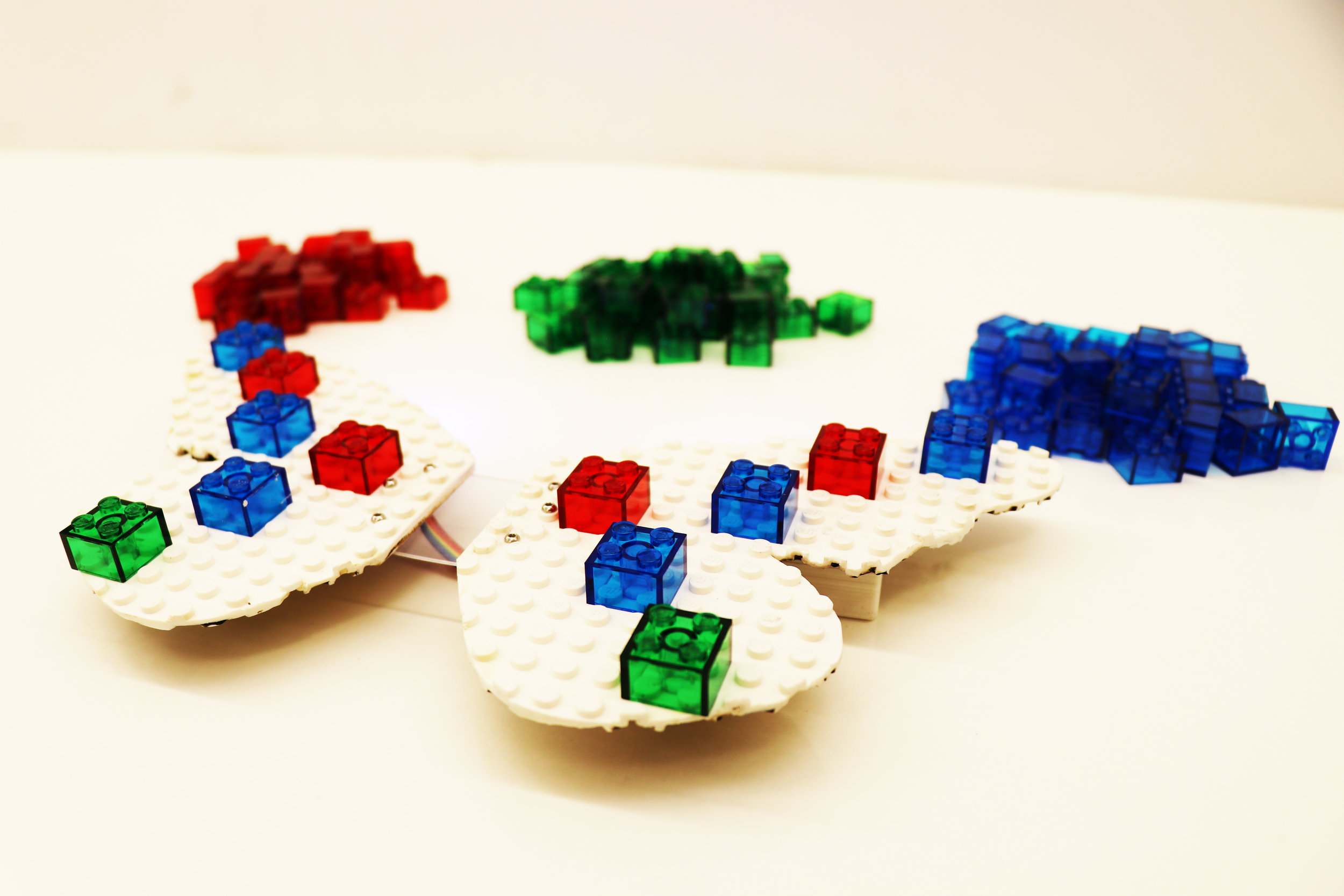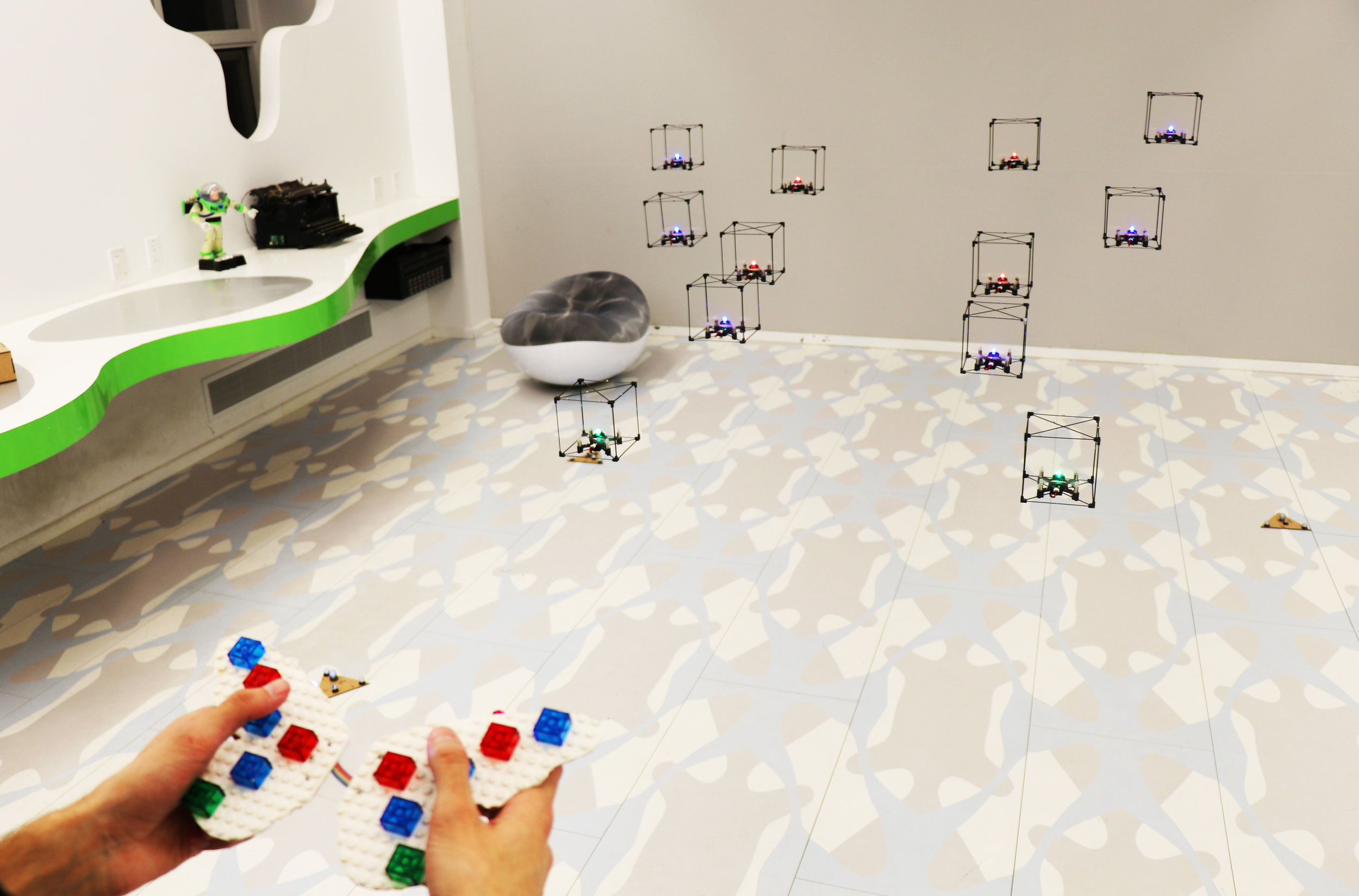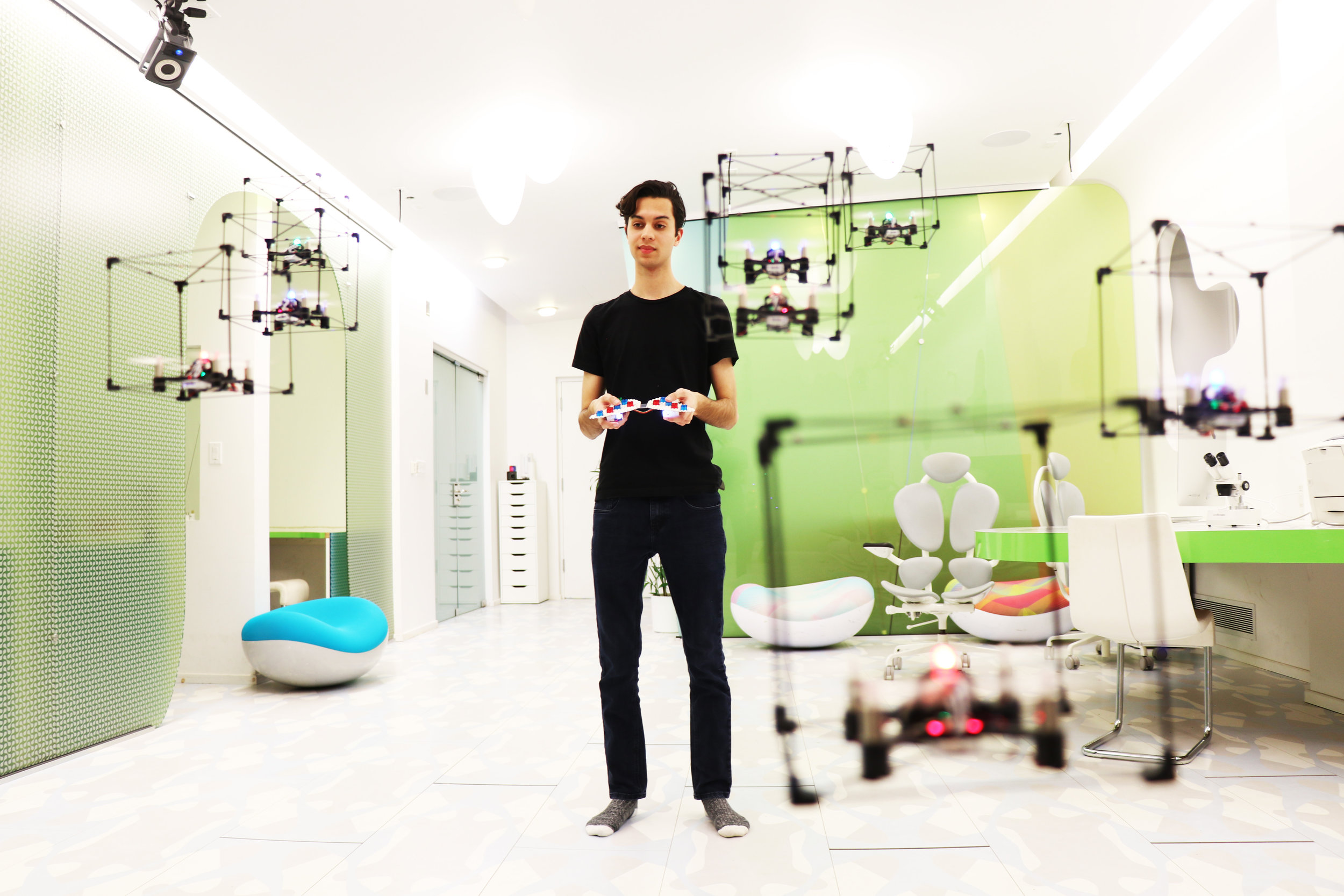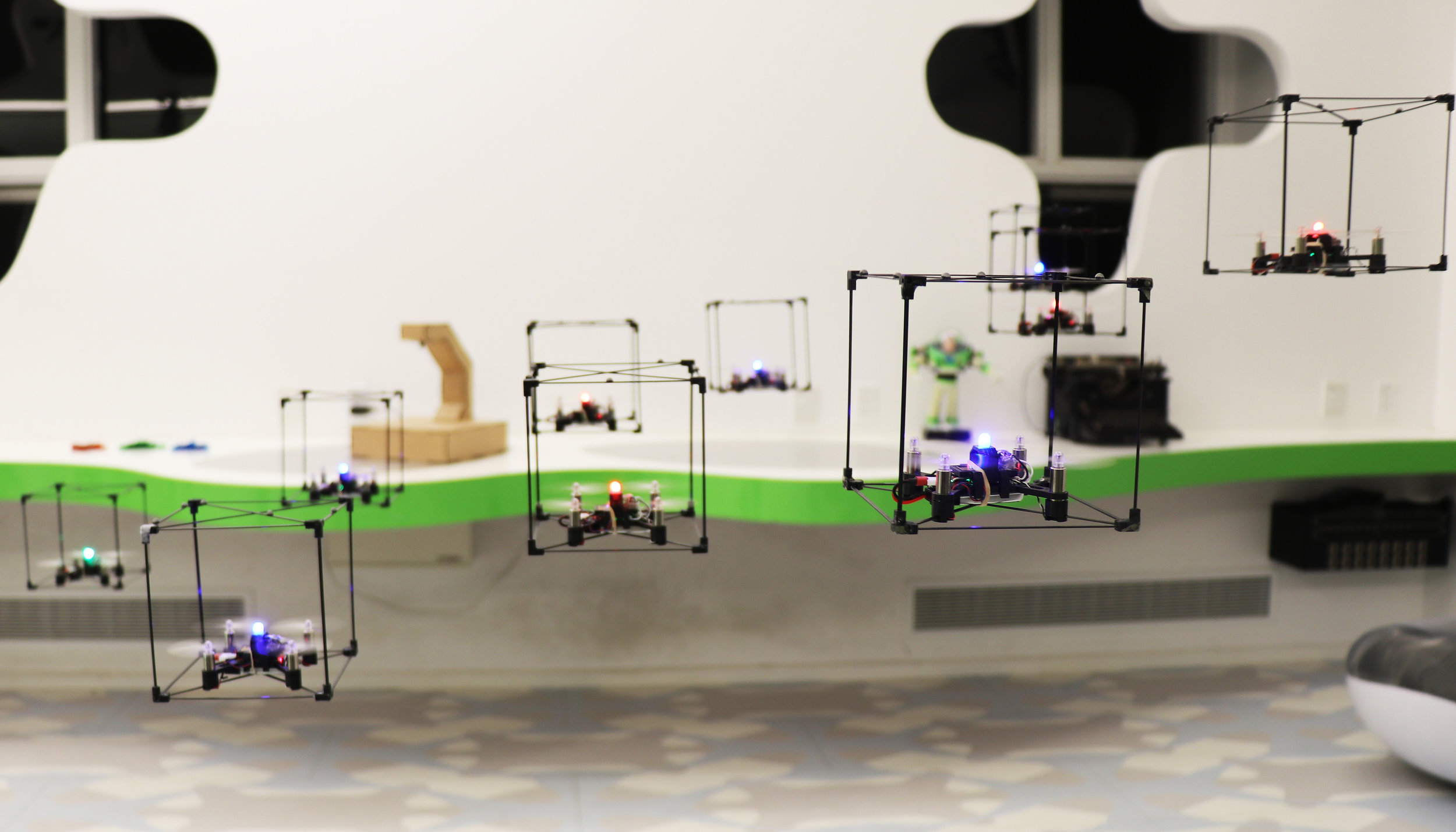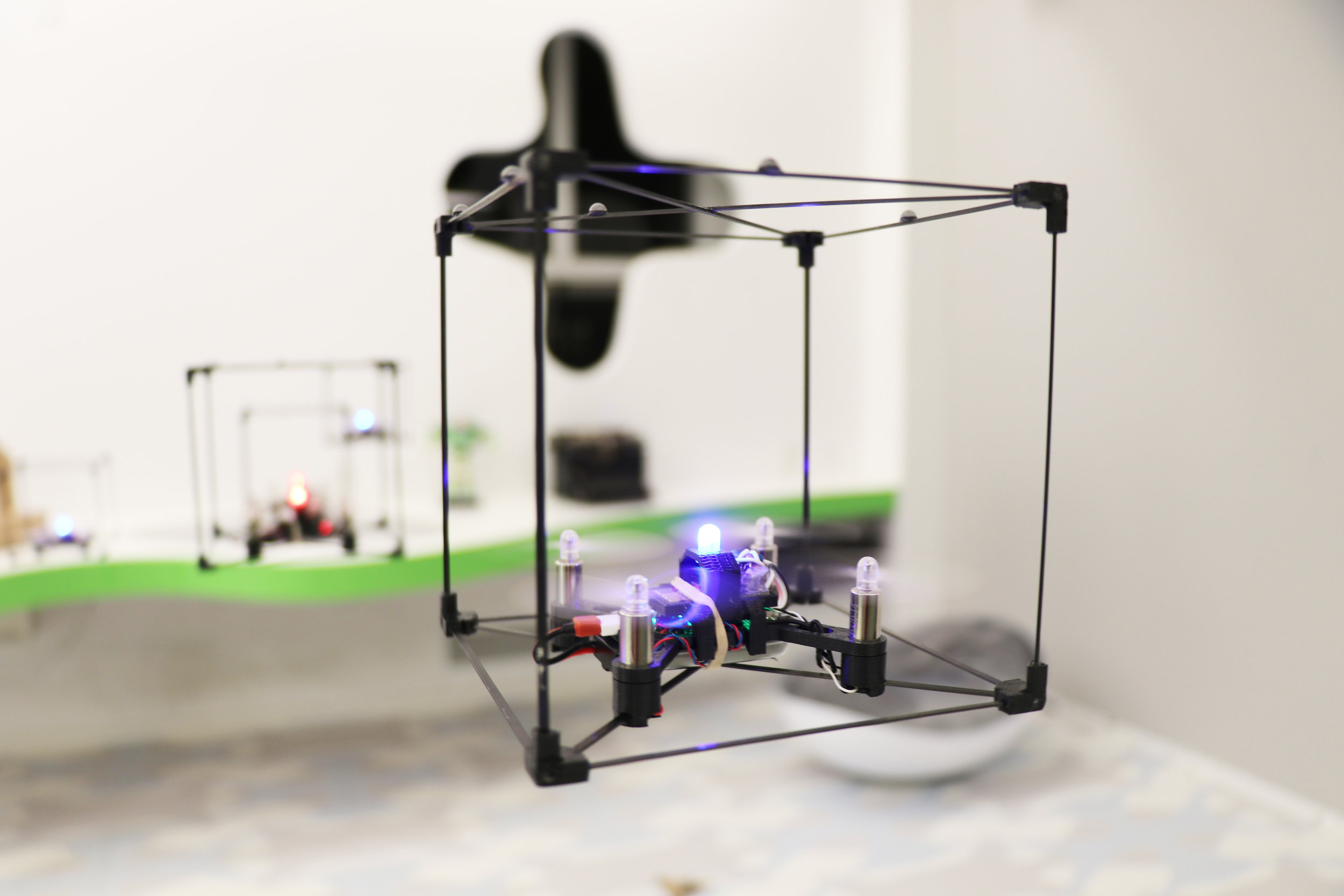Visitors will be able to experience and play with new technology combining LEGO® bricks and drones.
COPENHAGEN - February 15-18, children and families visiting the LEGO® World expo in Copenhagen, Denmark will have the chance to make their brick-building dreams take flight with a flock of interactive miniature drones developed by the Human Media Lab at Queen’s University in Canada in collaboration with the LEGO Group’s Creative Play Lab.
The system allows children to arrange LEGO elements into a shape of their choice and watch as a group of miniature drones takes flight to mimic the shape and colour of their creation in mid-air. With the aid of tiny sensors and gyroscopes, the system also tracks when the children move, twist and bend their designs. The drones faithfully replicate any shape alterations as an in-air animation.
“At the LEGO Group, we continuously explore the opportunities offered by new technologies to create fun and creative experiences for children. We are happy to offer the visitors at LEGO World the chance to experiment with LEGO bricks and drones in collaboration with Queen’s Human Media Lab. While the technology is a playful experiment, and not a real LEGO product, it is a way for us to explore the boundaries of what can be done with a combination of technology, LEGO bricks and loads of playful imagination,” said Tom Donaldson, VP of Creative Play Lab, at the LEGO Group.
The LEGO Creative Play Lab is a department within the LEGO Group, focusing on inventing the future of play. One of the ways it does this is by looking at different trends and ways in which children, parents and families play and interact with play material, aiming to create the play experiences of tomorrow and unleash their creative potential.
“At the Human Media Lab, we believe this technology has the potential to take experiential learning to an entirely new level. We have created a technology that works to blend the digital and physical worlds together right before children’s eyes,” says Dr. Vertegaal, head of the Human Media Lab and professor of Human-Computer Interaction at Queen’s University in Kingston, Canada.
He believes that the drone technology could potentially unlock new realms of interactive teaching capable of providing children insights into the physical world. While currently at an experimental stage, Vertegaal sees a potential technology used in the future to teach young schoolchildren about physics.
“As an example, imagine us interactively reconstructing the movement of planets around our sun or distant stars in the Milky Way galaxy,” says Dr. Vertegaal. “With this technology, we are able to simulate the physics of the natural world like gravity, planetary orbits, and more, giving children a chance to see what they have long learned from textbooks and two-dimensional depictions, in a real physical environment.”
The Human Media Lab has worked closely together with the Creative Play Lab team at the LEGO Group and Dr. Vertegaal’s research collaborator, Prof. Tim Merritt from Aalborg University in Denmark, to create the installation. Children and parents at the LEGO World expo who try the new technology will have the opportunity to discuss their experiences with Prof. Merritt. Information from these discussions will provide insights into how children interact with the drones, their ideas for how they’d like to play and learn with it in the future, and about the issues they encountered while operating the technology.
Media Footage
High resolution photographs are available rights-free by clicking the thumbnails below. Please include a photo credit to Human Media Lab. Music by bensound.com
Media contacts:
Human Media Lab at Queen’s University
Dave Rideout
Communications Officer, Media Relations
613-533-6000 ext. 79648
dave.rideout@queensu.ca
The LEGO Group:
Roar Rude Trangbæk, Press officer, Corporate Brand Communications
media@lego.com
About the Human Media Lab at Queen’s University
The Human Media Lab (HML) at Queen’s University is one of Canada's premier Human-Computer Interaction (HCI) laboratories. Inventions include eye contact sensors, smart pause, attention-aware smartphones, PaperPhone, the world’s first flexible phone, PaperTab, the world’s first paper computer and TeleHuman2, the world’s first holographic teleconferencing system. HML is directed by Dr. Roel Vertegaal, Professor of HCI at Queen's University's School of Computing. Working with him are a number of graduate and undergraduate students in engineering, design and psychology.
About the LEGO Group
The LEGO Group is a privately held, family-owned company with headquarters in Billund, Denmark, and main offices in Enfield, USA, London, UK, Shanghai, China, and Singapore. Founded in 1932 by Ole Kirk Kristiansen, and based on the iconic LEGO® brick, it is one of the world's leading manufacturers of play materials. Guided by the company spirit: "Only the best is good enough”, the company is committed to the development of children and aims to inspire and develop the builders of tomorrow through creative play and learning. LEGO products are sold worldwide and can be virtually explored at www.LEGO.com. For more news from the LEGO Group, information about our financial performance and responsibility engagement, please visit http://www.LEGO.com/aboutus
About Human Centered Computing at Aalborg University
The Human-Centered Computing at Aalborg University is a research unit in the department of computer science providing research and teaching in Interaction Design (IxD) and Human-Computer Interaction (HCI). iSince 1974, Aalborg University (AAU) has provided knowledge, development and highly qualified graduates to the outside world. More than 20,000 students are enrolled at Aalborg University and more than 3,500 staff members are employed across the University’s three campuses in Aalborg, Esbjerg and Copenhagen. For more information about the research unit, please visit http://www.cs.aau.dk/research/human-centered-computing



